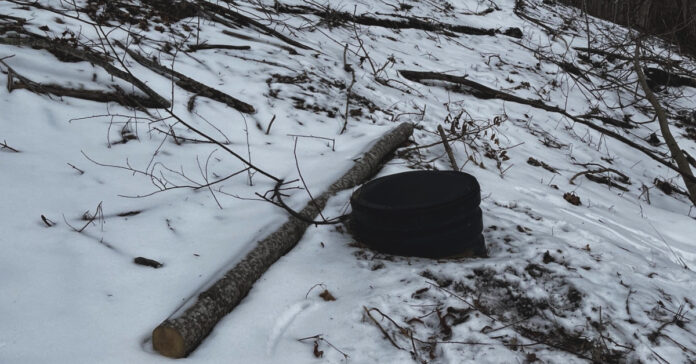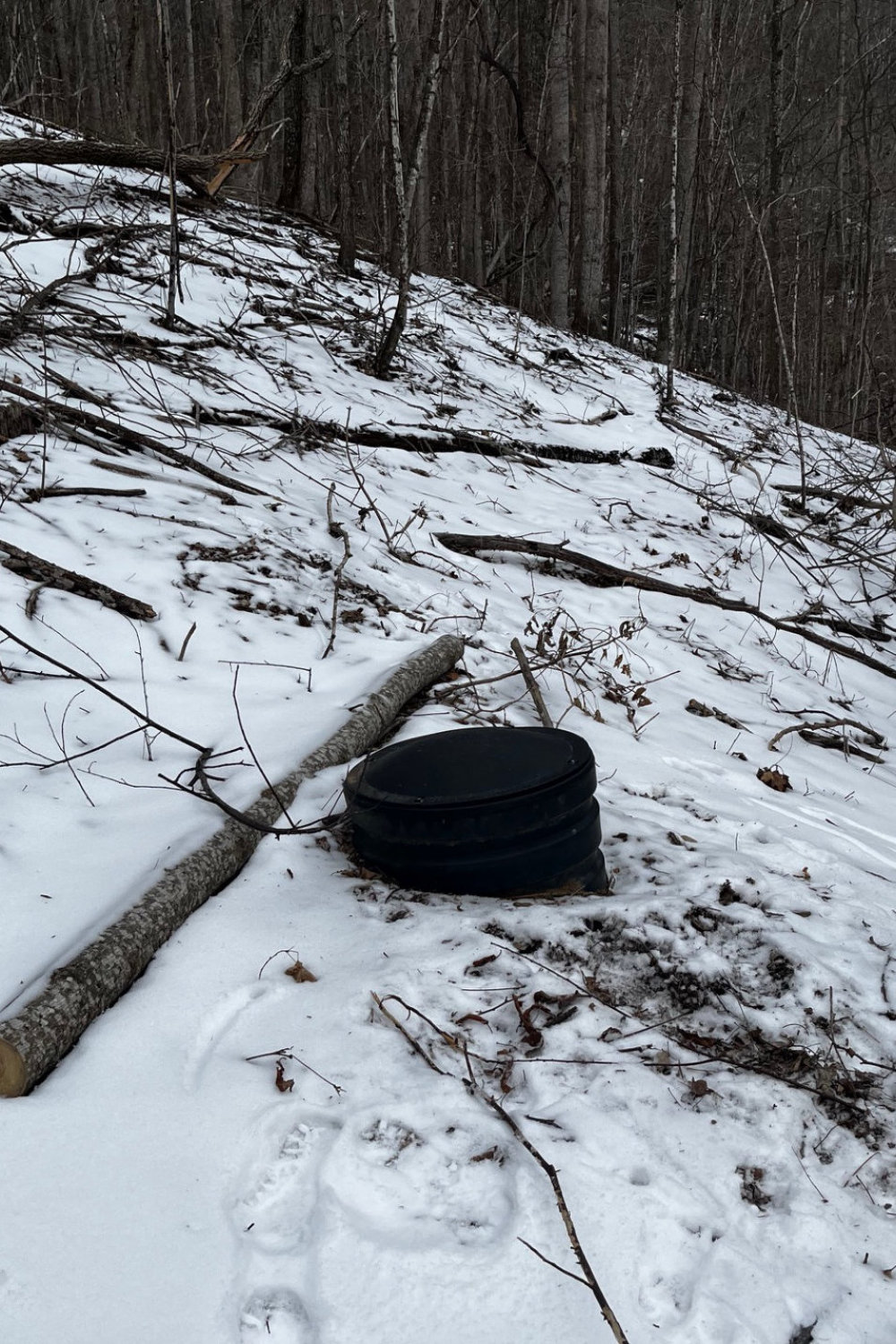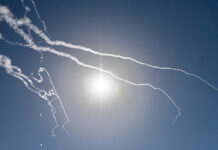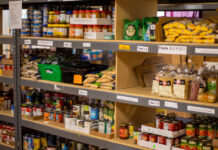
We are still living without running water. It’s been a learning experience, albeit one we hope clears up this week when temperatures rise.
I hiked up the mountain to the cistern and could hear what sounded like water falling into it. I checked the overflow pipe and there was no overflow. The obvious conclusion is that the tank is not full. But why am I hearing water? And why do I get only a trickle of water in the house, with minimal pressure? I have come up with the following scenarios.
Possible Scenarios
- The pipe that leads from the spring to the cistern is frozen, so only a tiny amount of water is trickling into the cistern. This accounts for the trickle of water we get in the house. This would be the ideal scenario because it implies that when the pipe thaws, the system will restore itself and return to normal.
However, the lack of water pressure at the house concerns me. Overnight, the tiny trickle of water should build up, either in the pipe leading to the house, or in the cistern, so that when we turn on the faucet for the first time in hours, we’d have good pressure, but the water soon runs out. This is what I would expect, but it is not the case. Which leads me to my next scenario. - The pipe to the cistern is fine, but the pipe from the cistern to the house is frozen. What little water we are getting is working past the ice or melting off of it. Or,
- The pipe from the cistern froze and then cracked. A small amount is still reaching the house, but much of the water it should carry is leaking out.
I have walked the path of the pipe and seen no obvious signs of a leak such as a newly wet spot or a large ice slick. - It is also possible, although most unlikely, that there is a crack in the cistern and any water reaching it is leaking out. Again, no signs of a leak.
- There could be ice in the cistern. The ice could block the entrance to the pipe that flows to the house. This could also be what is blocking the overflow pipe. I think this is unlikely.
Next Steps
If the temperatures rise as expected and our water isn’t back to normal by Wednesday or Thursday, I will walk up to the cistern again to see if the overflow is flowing. If so, that will rule out scenario one. At that point, I’ll have to take some action. I will start by opening the cistern, strapping on my headlamp and sticking my head partway down the riser to see the inside. Depending on what I see, I should be able to rule in or out scenarios four and five.
My hope is we don’t have to do any serious digging. That’s when things can get time consuming and expensive.
Some Luck
We are lucky that the trickle of water allows us to continue to flush the toilets. It takes five or ten minutes for the toilet tank to refill, but it eventually fills up, meaning we don’t have to haul water from the creek and pour it into the toilet tank.
We are also lucky that our neighbors have water. On Sunday, we took showers and refilled two five-gallon containers at house of the neighbor whom we helped during the aftermath of Helene. He has offered to let my wife do the laundry there on Monday.
Water Consumption
Since this is our first lengthy water outage, it has been a learning experience. We now know how much water we will need in a SHTF scenario that includes no water. I’m providing specifics in the hope that they will help you prepare.
I am drinking four 16.9 ounce bottles of water a day, plus any of the ice that melts in my big insulated metal cup. My wife is drinking less water and more coffee. This tells me storing the recommended one gallon of water per person per day is fine, but only for drinking. We are using an additional five gallons per day for other uses. For example:
- I am giving the chickens 2.5 gallons of water every day and tossing a good chunk of it the next morning when it is frozen. In the summer, they drink twice as much. I am getting this water from the creek, so we are not using clean water.
- The dog gets more than a quart in her bowl, even though she prefers to drink from running water at the stream. In a pinch, I would cut back on her water, haul water from the spring, or give her more opportunities to go to the stream.
- The humidity sank to 16 percent when we stopped adding water to the big kettle of water on the wood stove. We are back to using between one and two gallons a day to humidify the house. I could use creek water here, too, but am not. The humidity has risen to 21 percent. I will be happier when it is in the 26 to 30 percent range.
- My wife has also watered her indoor plants and gives fresh water to the cat.
Food Prep and Cleaning
- We are trying to eat foods that do not require extensive water usage. That’s not difficult, but it leaves out pasta and anything else that needs to be boiled.
- The biggest remaining use is doing the dishes, cleaning the kitchen, and keeping ourselves clean. We are using paper plates, but our normal silverware. My wife is boiling water on the stove to clean the silverware, pots, and pans. We are showering elsewhere. We are washing our hands under the trickle of water. Having liquid soap makes this easier than using a bar of soap.
- Obviously, we are not running the dishwasher or the laundry. If we run into a no-water scenario after the SHTF, I think we’ll be doing only minimal laundry by hand when the temperatures are in the teens or lower. Only things like underwear and socks. Anything we do launder will have to be dried indoors. In this weather, the outside clothesline won’t dry the clothes as much as freeze them.
Useful Water Management Tools
Going through five days of no water also demonstrates why it is a good idea to have a drip filter you can place on your counter and filter water via gravity. Ours is rated for one gallon an hour, which should be enough for our needs, as long as we don’t let it run dry. We take having clean, pure water available at the turn of a knob for granted. A drip filter is the closest thing post-SHTF.
The most useful devices we are using are our large water jugs. One model is the seven-gallon Aqua-Tainer, which is blue. I have one in the garage, and I just open the spout to fill up anything I need to. It’s heavy when full, but the handle allows me to carry one in each hand. We also have some white five-gallon containers we purchased years ago from Uline. These are less expensive than the Aqua-Tainers and work just as well, but for long-term storage, I prefer the blue jugs to keep out the light and prevent algae growth.
Five-gallon pails also work for transporting water, and we dip one into the stream to get water. I use a five-gallon pail every day to fill the chickens waterer, but the square containers with spigots are better for use inside the house and can stack for storage.
While we have used more than a case of bottle water for drinking, we find small water bottle are useful for short-term emergencies but are not optimal for lengthy emergencies. It’s good to have stored water, but it is even better to have the capability to purify your own on an as-needed basis. You can get pumps, filters, chemical treatments, or other methods. Like any prep, redundancy and alternative methods are good to have.
Unexpected Emergencies
We’ve had our share of unexpected emergencies here at the homestead in the past six months, all weather related. Weather is one of those variables you cannot control or account for, so your best bet is to prepare for it. I’d have preferred never to need them, but our preps have helped us survive, and in some cases thrive, under difficult circumstances.
When the day comes, I hope you have preps to cushion the blow and make your recovery easier.







